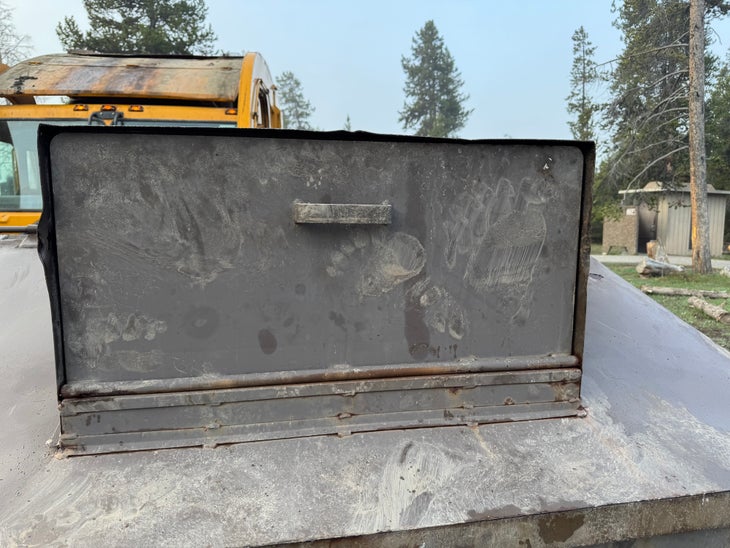Heading out the door? Read this article on the new Outside+ app available now on iOS devices for members! Download the app.
Yellowstone National Park staff trapped and killed a food-conditioned grizzly bear Wednesday after determining that he had become a threat to public safety. It’s the first time the park has had to euthanize a bear for wildlife management reasons since 2017.
Starting in early April, the 11-year-old male bear developed a habit of accessing human food by flipping over 800-pound dumpsters and tearing bear-resistant trash cans from their concrete bases. Parkgoers repeated spotted him seeking human food in the busiest areas of the park: near Old Faithful, the Nez Perce Picnic Area, and the Midway Geyser Basin parking lot.
The fact that this griz was able to outsmart the bear-resistant infrastructure—and could possibly introduce other bears to human food—meant that there was only one option, Yellowstone Bear Management Biologist Kerry Gunther said in a press release.
“We go to great lengths to protect bears and prevent them from becoming conditioned to human food. But occasionally, a bear outsmarts us or overcomes our defenses. When that happens, we sometimes have to remove the bear from the population to protect visitors and property.”

According to the national park, there have been 31 bear conflicts in Yellowstone since 2015, averaging to about three per year. A conflict means that the bear was able to damage property, gain access to human food, or in the most severe cases, injure or kill a person. Some typical resolutions for human-bear conflicts include hazing or adding more bear-proofing to the area. If there’s evidence that a single bear has repeatedly shown aggressive behavior that has become a threat to human safety, though, the park’s wildlife managers sometimes kill the bear. The last time that Yellowstone had to resort to that was in September 2017. That bear had repeatedly damaged tents and accessed human food in the backcountry campsites at Heart Lake.
Bears are opportunistic eaters. If they know there’s easy-to-access food, such as improperly stored human food near campsites, they’ll take advantage of it and even return to the area the next time they’re hungry. The success of the park’s bear-management plan relies on visitors using the bear-resistant food storage lockers in campgrounds and bear-resistant dumpsters throughout the park. If visitors leave their smellables out where bears can easily access it, the animals can develop dangerous habits for both themselves and humans nearby.

Why not just relocate a bear that has become food-conditioned? It’s not that easy in Yellowstone. According to the park’s website, wildlife managers can’t move them far enough to guarantee they won’t continue the behavior or return to the original conflict site. Also, since the 1970s, over half of Yellowstone’s conflict-prone grizzly bears continued to cause conflicts in the park after relocation. While parks can sometimes send young bears that are still dependent on their mothers to zoos, Yellowstone officials noted in a Facebook comment that adult bears are not candidates for that.
Yellowstone’s bear-management plan is largely successful when it comes to preventing human injury. With the 118 million visits since 1979, only 44 people have been injured by grizzlies in the park. Throughout the whole park, a person’s chance of grizzly-caused injury is approximately 1 in 2.7 million visits.
From 2025
